



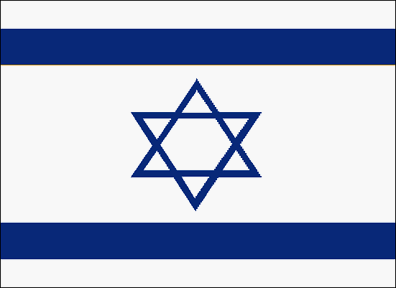

Israel's Nuclear Weapons Program
Last changed 10 December 1997Israel is believed to possess the largest and most sophisticated arsenal outside of the five declared nuclear powers. Israel has never admitted possessing nuclear weapons, but abundant information is available showing that the capability exists.
- A short essay on the history of Israel's nuclear weapons program
- April 1997 revelations about Israeli-South African nuclear collaboration
The center of Israel's weapons program is the Negev Nuclear Research Center near the desert town of Dimona (the center is usually identified simply as "Dimona"). A nuclear reactor and plutonium production facility was built by France at this facility in the late 1950s and early 60s. All of the production and fabrication of special nuclear materials (plutonium, lithium-6 deuteride, and enriched and unenriched uranium) occurs at Dimona although the design and assembly of nuclear weapons occurs elsewhere.
October 1997 news stories about workers health and safety at Dimona
| Click on images for close-ups | |
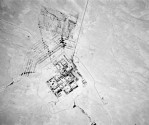 | This is an image of the Dimona facility taken by a US Corona spy satellite in 1971 (Mission 1115-2, 29 September 1971, Frame: 52, 53). It is physically impossible to take a similar image within the atmosphere as Israel jealously protects the airspace above Dimona. In the 1960s an Israeli Airforce Mirage was shot down when it accidentally ventured too close to Dimona. |
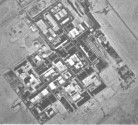 | A closeup of the same Corona frames. |
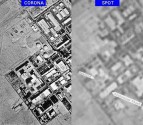 | Side-by-side comparison of a Corona image and the much lower resolution SPOT commercial imaging satellite. The SPOT image lables the Dimona nuclear reactor dome and Machon 2 which houses the plutonium separation plant. |
| Satellite images courtesy John Pike at the Federation of American Scientists, see the FAS Intelligence Resource Program page. The SPOT Image was acquired and exploited by Peter Zimmerman. | |
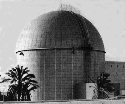 The Dimona Reactor Dome (courtesy Mordechai Vanunu) (34 K)
The Dimona Reactor Dome (courtesy Mordechai Vanunu) (34 K)
The most specific and detailed information to be made public about its nuclear program came from a former mid-level nuclear technician named Mordechai Vanunu. Vanunu had worked at the Machon 2 facility, where plutonium is produced and bomb components fabricated, for 9 years before his increasing involvement in left wing pro-Palestinian politics led to his dismissal in 1986. Due to lax internal security, prior to his departure he managed to take about 60 photographs covering nearly every part of Machon 2.
After travelling around the world for several months in Bohemian style, he converted to Christianity in Australia. The religious group he associated with has an activist anti-nuclear bent and he soon decided to make public his knowledge of Israel's nuclear weapons capability. He made contact with the London Sunday Times which flew him to London and began preparing an exclusive news story. Unfortunately for Vanunu, the Israeli government had found out about his activities and the Mossad arranged to kidnap him and bring him back to Israel for trial.
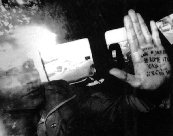 Mordechai Vanunu revealing details of his capture (39 K)
Mordechai Vanunu revealing details of his capture (39 K)
For an even bigger image (57 K) click here.
He was successfully lured into a trap by a female Israeli agent named Cheryl Bentov operating under the name of "Cindy". His sudden disappearance before the publication of the Sunday Times story was mysterious at the time. The story was finally published several days later on 5 October 1986. A few motnhs later Vanunu's status as a prisoner of the Israeli government was confirmed when it was revealed that he would stand trial. Despite being essentially incommunicado, Vanunu managed to reveal details of his capture in dramatic fashion when he wrote the information on the palm of his hand, and held it up for news photographers as he was being whisked away from the courthouse.
As described by Vanunu, the Dimona complex has nine buildings ("Machons", Hebrew for "facility") including to the reactor building. The plant employs 2700 people.
Control room of the Machon 2 plutonium separation plant (courtesy Mordechai Vanunu) (31 K)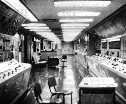
- Machon 1 is the reactor building with its 60 foot silver dome.
- Machon 2 is where Vanunu worked, along 150 other people. From outside, Machon 2 is a nondescript two story windowless building 80 feet wide and 200 feet long. The above-ground structure houses an air filtration plant, some offices, storage space, and a worker's canteen. Also in the structure is the entrance to limited access elevators that transport people to the six underground levels, extending eightly feet below the surface. This hidden area houses an automated Purex plutonium separation plant, plutonium fabrication and reclamation shops, and fabrication shops for bomb components made out of lithium deuteride and beryllium. The separation plant is housed in a production hall (called "The Tunnel" that occupies the first four levels. Level 5 is the fabrication area for plutonium, lithium deuteride, and beryllium. The Tunnel normally operates one 34 week long "production campaign" each year, being closed for servicing and refurbishment the rest of the year.
- Machon 3 is a chemical plant that produces lithium-6 deuteride and also processes natural uranium and fabricates reactor fuel rods.
- Machon 4 is a waste treatment plant for the radioactive effluent from the plutonium extraction process in Machon 2 . This plant presumably converts the waste products for convenient disposal, and may also separate the uranium for reuse.
- Machon 5 coats the uranium fuel rodes with aluminum.
- Machon 6 is the physical plant for Dimona, providing power and other services.
- Machon 8 (there is no Machon 7) contains a laboratory for testing and process development. This building houses Unit 840, which operates gas centrifuges for enriching uranium.
- Machon 9 houses a laser isotope enrichment plant, also for enriching uranium.
- Machon 10 produces depleted uranium metal for anti-armor ammunition use.
Bomb components made of plutonium, lithium-6 deuteride, and beryllium are fabricated in level 5 of Machon 2. They are transported by convoys of unmarked cars to the warhead assembly facility, operated by Rafael north of Haifa.
The principal uncertainty in evaluating Israel's weapon production capability is the actual power level of the Dimona reactor. It has long been believed that Israel has upgraded the reactor repeatedly to increase its plutonium production. Vanunu claimed that Israel possessed 100-200 nuclear weapons (implying some 400-800 kg of plutonium) and can produce 40 kg of plutonium a year. This production figure indicates an average operating power of 150 MW thermal. Analysts generally discount figures this high, and the consensus is that it was initially operated at 40 MW and was upgraded to 70 MW sometime before 1977. A 1996 study by the Stockholm International Peace Research Institute (SIPRI) produced a somewhat lower range of estimates, concluding that Israel has produced 330-580 kg of plutonium through 1995, enough for a stockpile of 80-150 efficient weapons (the extreme estimate range was 190 to 880 kg).
Vanunu provided information indicating that the uranium fuel is subjected to burnups of 400 MW-days/tonne, a figure similar to that used by the US early in its weapons production program. This results in a high grade plutonium with a Pu-240 content of 2%. According to Vanunu 140 fuel rods are irradiated for periods of about three months before discharge for plutonium extraction. At 70 MW the Dimona reactor would consume some 48 tonnes of fuel a year and produce about 18 kg of plutonium.
Vanunu also claimed that Israel possessed fusion boosted weapons, and has developed hydrogen bomb technology. He provided information about both lithium-6 and tritium production. He stated that initially tritium was produced by a facility in Machon 2 called Unit 92 by separating it from the heavy water moderator where it is produced in small amounts as a by-product. In 1984 production was expanded when a new facility called Unit 93 was opened to extract tritium from enriched lithium that had been irradiated in the reactor. The large scale production of tritium by Israel has been confirmed by South Africa, which received a shipments of tritium totalling 30 g during 1977-79. This clearly indicates tritium production on a scale sufficient for a weapon boosting program. It is difficult to find any other rationale for such a large tritium production capability except some sort of thermonuclear weapon application.
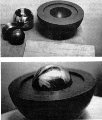 Mock-up of an Israeli Bomb (courtesy Mordechai Vanunu) (46 K)
Mock-up of an Israeli Bomb (courtesy Mordechai Vanunu) (46 K)
It is quite difficult to develop gas fusion boosting technology like that used in US weapons and weapons tests are probably essential. Although radiation implosion weapons could be developed without testing, they would tend to be large and heavy and would perhaps be incompatible with Israel's available delivery systems. It is quite possible then that a Sloika/Alarm Clock type system has been developed using lithium-6 deuteride fuel surrounding the plutonium core (in fact a weapon mock-up photographed by Vanunu appears to be this type of weapon). Tritium could be used to spike the fusion fuel and boost the yield, just as the Soviets did with the 400 Kt "Joe-4".
Bomb components made of plutonium, lithium-6 deuteride, and beryllium are fabricated in level 5 of Machon 2. They are transported by convoys of unmarked cars to the warhead assembly facility, operated by Rafael north of Haifa.
Hersh reports (without any stated source) that Israel has developed an extensive array of tactical nuclear weapons: efficient compact boosted fission bombs, neutron bombs (allegedly numbering in the hundreds by the mid-eighties), nuclear artillery shells, and nuclear mines. With an arsenal that is quite possibly in excess of 100 weapons it is likely that some of the nuclear materials would be applied tactical weapons. Boosted bombs are doubtful, as are neutron bombs, due to problems with development in the absence of a significant testing program. Neutron bombs also require very large amounts of tritium (20-30 g per weapon) which would impact the production of plutonium quite seriously (each gram of tritium displaces 80 grams of plutonium production). Artillery shells are also doubtful due to their wastefulness in plutonium. Tactical weapons are probably aircraft or missile delivered, or are pre-emplaced mines.
Burrows and Windrem claim (without indicating a source) that Israel has produced 300 warheads, including those that have since been dismantled. They place the current arsenal at about 200 weapons.
Several reports have surfaced claiming that Israel has some uranium enrichment capability at Dimona. Vanunu asserted that gas centrifuges were operating in Machon 8, and that a laser enrichment plant was being operated in Machon 9 (Israel holds a 1973 patent on laser isotopic enrichment). According to Vanunu the production-scale plant has been operating since 1979-80. The scale of a centrifuge operation would necessarily be limited due to space constraints, and might be focused toward enriching depleted reactor fuel to more efficiently use Israel's uranium supply. A laser enrichment system, if developed to operational status, could be quite compact however and might be producing weapon grade material in substantial quantities. If highly enriched uranium is being produced in substantial quantities, then Israel's nuclear arsenal could be much larger than estimated solely from plutonium production.
Reports that Zalman Shapiro, the American owner of the nuclear fuel processing company NUMEC, supplied enriched uranium to Israel in the 1960s seems to have been authoritatively refuted by Hersh.
Israel produces uranium domestically as a by-product of phosphate mining near the Dead Sea but this amounts to only 10 tons a year, and is grossly insufficient for its needs. Israel has addressed this shortfall by reprocessing the low burnup spent fuel to recover uranium (which most nations do not do). It is also known to have purchased at least 200 tons of natural uranium on the world market under an alias. A major source though was some 600 tons of uranium provided by South Africa in a quid pro quo for Israel's assistance on its weapons program. Combined with uranium recycling, and the possible use of enrichment to stretch the uranium supply, these quantities may be sufficient to account for Dimona's fuel supply to the present date (1997).
Israel can undoubtedly deploy nuclear weapons using its capable air force. The aircraft and crews dedicated to nuclear weapons delivery are located at the Tel Nof airbase. Originally the F-4 Phantom II acquired in 1969 was probably the designated carrier, today it would be the F-16. The F-16 has an unrefueled radius of action of 1250 km, extending out to western Iran, the shores of the Black Sea, Riyadh, or the Libyan border. With refueling it can travel much farther of course, and an unrefueled one-way mission could take it as far as Moscow.
Israel also possesses medium-range ballistic missiles: the Jericho-1 (Ya-1 "Luz") with a 500 kg payload, and a range of 480-650 km (operational since 1973); and the Jericho 2 (either Ya-2 or Ya-3) with a 1000 kg payload and a range of over 1500 km (operational since 1990). Under development is the Jericho-2B with a range of 2,500 km. These missiles were almost certainly developed specifically as nuclear delivery systems (although chemical warheads cannot be ruled out). About 50 Jericho-1s and 50 Jericho-2s are believed to have been deployed. Israel also has a 100 or more US supplied Lance tactical missiles, with a range of 115 km (72 miles). Although these were supplied with conventional warheads, they could have been outfitted with nuclear or chemical ones.
Jericho 1
This is believed to be named Luz and designated YA-1 by Israel. It is based on the French missile MD-600 built by Dassault and was developed during the 1960s.
Specifications
Length: 10 m
Width 1.0 m
Launch weight 4500 kg
Propulsion: Two stage solid propellant
Range: 500 km
Payload: 500 kg
Jericho 2
Jericho-2 development is indigenous, and started soon after the Jericho-1 was deployed. Test launches began in 1986 and the first two had ranges of 465 km (1986) and 820 km (1987). The Jericho-2 shares the first two stages of the civilian Shavit (Comet) space launch vehicle, which has launched Israel's four satellites, the Offeq-1, 2, and 3 reconnaissance satellites, and the Amos communications satellite.
 Shavit space launch vehicle, Offeq-2 launch on 3 April 1990 (13 K)
Shavit space launch vehicle, Offeq-2 launch on 3 April 1990 (13 K)
Specifications
Length: 12 m
Width 1.2 m
Launch weight 6500 kg
Propulsion: Two stage solid propellant
Range: 1500 km
Payload: 1000 kg
The Jericho 1 and 2 are deployed near Kfar Zachariah and Sderot Micha in the Judean foothills, about 23 km east of Jerusalem (and about 40 km southeast of Tel Aviv). Located a few kilometers to the northwest is Tel Nof air base. Images of the missile complex made by commercial satellites have been published in recent years, and September 1997 Jane's Intelligence Review published a 3-D analysis of high resolution pictures taken by the Indian IRS-C satellite.
The complex is compact - smaller than 6 km x 4 km. The missiles are mobile, being deployed on transporter-erector-launchers (TELs), and are based in bunkers tunneled into the side of the limestone hills. There are no signs of missile silos. TELs require firm, accurately leveled ground in order to launch, and maximum missile accuracy requires pre-surveyed launch points. Consequently there are a number of prepared launch pads (paved culs-de-sac) connected to these bunkers by paved roads. Images of an actual Jericho 2 TEL indicate that it is about 16 m long, 4 m wide, and 3 m high. It is accompanied by three support vehicles (probably a power supply vehicle, a firing control vehicle, and a communications vehicle). The Zachariah missile base was enlarged between 1989 and 1993 during the Jericho-2 deployment. A few kilometers north of Tel Nof is the Be'er Yaakov factory where the Jericho missiles and the Shavit are believed to have been manufactured.
From its deployment location in central Israel the Jericho-1 missile can reach such targets as Damascus, Aleppo, and Cairo. The Jericho-2 can reach any part of Syria or Iraq, and as far as Teheran, and Benghazi, Libya. The Jericho-2B will be able to reach any part of Libya or Iran, and as far as southern Russia. The short range of the Lance limits it mainly to battlefield use, although the Syrian capital of Damascus is in range from much of northern Israel. According to Jane's World Air Forces, Israel has three Jericho-equipped missile squadrons.
Also located at the site are a group of 21 bunkers thought to contain nuclear gravity bombs. Five of the larger ones are about 15 m wide and 20 m long, and rise 6 m above ground.
Israel has taken active steps to prevent nations that are officially at war with it from acquiring nuclear capabilities. The bombing of the Osiraq reactor in Iraq in 1981 is the most famous case, but an earlier sabotage of the reactor core in France prior to shipment is probably attributable to Mossad.
Israel's official policy is that it will not be the first nation to introduce nuclear weapons into the Middle East. In contrast to the coy hinting of some undeclared weapon's states, Israel thus actively denies possessing nuclear weapons. Its obvious capability in this regard has thus established de facto deterrence, while minimizing (but not eliminating) domestic and international controversy.
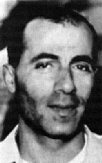 Mordechai Vanunu (17 K)
Mordechai Vanunu (17 K) Mordechai Vanunu (35 K)
Mordechai Vanunu (35 K)
No comments:
Post a Comment